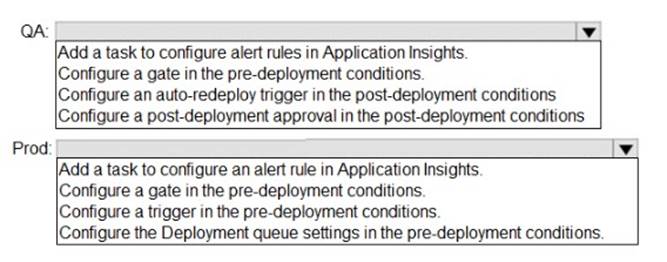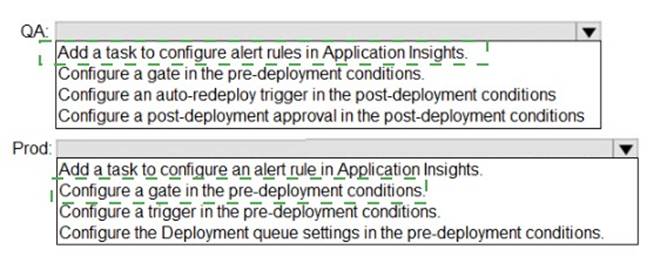- (Topic 4)
You have a private distribution group that contains provisioned and unprovisioned devices.
You need to distribute a new iOS application to the distribution group by using Microsoft Visual Studio App Center.
What should you do?
Correct Answer:
B
When releasing an iOS app signed with an ad-hoc or development provisioning profile, you must obtain tester's device IDs (UDIDs), and add them to the provisioning profile before compiling a release. When you enable the distribution group's Automatically manage devices setting, App Center automates the before mentioned operations and removes the constraint for you to perform any manual tasks. As part of automating the workflow, you must provide the user name and password for your Apple ID and your production certificate in a .p12 format.
App Center starts the automated tasks when you distribute a new release or one of your testers registers a new device. First, all devices from the target distribution group will be registered, using your Apple ID, in your developer portal and all provisioning profiles used in the app will be generated with both new and existing device ID. Afterward, the newly generated provisioning profiles are downloaded to App Center servers.
References:
https://docs.microsoft.com/en-us/appcenter/distribution/groups
- (Topic 2)
You need to implement Project4. What should you do first?
Correct Answer:
C
Scenario: Implement Project4 and configure the project to push Docker images to Azure Container Registry.
You use Azure Container Registry Tasks commands to quickly build, push, and run a Docker container image natively within Azure, showing how to offload your "inner-loop" development cycle to the cloud. ACR Tasks is a suite of features within Azure Container Registry to help you manage and modify container images across the container lifecycle.
References:
https://docs.microsoft.com/en-us/azure/container-registry/container-registry-quickstart-task- cli
- (Topic 4)
You plan to use Terraform to deploy an Azure resource group.
You need to install the required frameworks to support the planned deployment. Which two frameworks should you install? Each correct answer presents part of the
solution.
NOTE: Each correct selection is worth one point.
Correct Answer:
BD
You can use the combination of Terraform and Yeoman. Terraform is a tool for creating
infrastructure on Azure. Yeoman makes it easy to create Terraform modules.
Terratest provides a collection of helper functions and patterns for common infrastructure testing tasks, like making HTTP requests and using SSH to access a specific virtual machine. The following list describes some of the major advantages of using Terratest:
✑ Convenient helpers to check infrastructure - This feature is useful when you want
to verify your real infrastructure in the real environment.
✑ Organized folder structure - Your test cases are organized clearly and follow the standard Terraform module folder structure.
✑ Test cases are written in Go - Many developers who use Terraform are Go developers. If you're a Go developer, you don't have to learn another programming language to use Terratest.
✑ Extensible infrastructure - You can extend additional functions on top of Terratest, including Azure-specific features.
Reference:
https://docs.microsoft.com/en-us/azure/developer/terraform/create-base-template-using- yeoman
https://docs.microsoft.com/en-us/azure/developer/terraform/test-modules-using-terratest
DRAG DROP - (Topic 4)
You have an Azure Repos repository named repo1. You delete a branch named features/feature11. You need to recover the deleted branch.
Which three commands should you run in sequence? To answer, move the appropriate commands from the list of commands to the answer area and arrange them in the correct order.
Solution:
Does this meet the goal?
Correct Answer:
A
HOTSPOT - (Topic 4)
You have a project in Azure DevOps that contains a release pipeline. The pipeline contains two stages named QA and Prod. QA deploys code to an Azure web app named webapp1. Prod deploys code to an Azure web app named webapp2.
You need to ensure that code deployments to webapp2 are blocked if Azure Application Insights generates Failed requests alerts following the deployment of new code to webapp1.
What should you do for each stage? To answer, select the appropriate options in the answer area.
NOTE: Each correct selection is worth one point.
Solution:
Does this meet the goal?
Correct Answer:
A